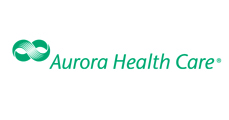by Cheryl Miller

When it comes to healthcare, taking an active role in all decisions affecting your healthcare is key. Consumers need to ask the right questions, do their research, and understand what is important to them —
before making healthcare choices that can best suit their own situation.
Explore your options and current benefits
What are the basic covered benefits, including preventive care, of your current and/or prospective health plan? Consider these questions:
• are your current health care providers listed as being “in-network” providers?
• what are the monthly premium costs for each plan under consideration?
• what are the co-pays, deductibles, out-of-pocket maximum costs of each plan?
Answering these questions can help better estimate the medical spending you can expect to incur. If seeing a specific health care provider is important to you, verify that the provider is “in network,” or expect to pay considerably more for seeing an “out-of-network” provider.
Seek pricing transparency
The cost of any medical service — including doctors’ visits, surgery and hospitalizations — can vary widely. The more you know beforehand about the cost of your care, the more you can control and be adequately prepared to cover your medical spending. This is especially true if you are planning a surgical procedure.
Seeking price transparency can be a challenge, but there are some resources available to aid in this process. Contacting your health care provider(s) and your health insurance company can be a good start. At Advocate Aurora, trained financial advocates can help consumers by giving them cost estimates on specific tests and procedures, based upon the person’s insurance coverage.
In Wisconsin, consumers can visit
https://www.wipricepoint.org, sponsored by the Wisconsin Hospital Association (WHA), to learn about hospital charges for specific services and to compare services and charges among Wisconsin hospitals. Online pricing tools typically provide the “list price” of a service or procedure. If you have health insurance coverage, you’ll be charged the lower “insurers’ negotiated rate,” but list-price information is a good starting point for basic comparisons.
Estimate annual medical spending
Before selecting a health insurance plan, cost-conscious consumers should factor in the cost of health insurance premiums, anticipated medical expenses and co-pays, co-insurance (the percentage paid after meeting the deductible), prescription drug costs, along with any contributions and potential tax savings from pre-tax benefit accounts.
Traditional health insurance plans with lower co-pays and deductibles will have higher monthly premiums. A traditional plan might be a good option if you wish to minimize the potential of facing a large deductible you are responsible for. Conversely, High-Deductible Health Plans (HDHPs) offers lower premiums, but a much higher deductible and often higher coinsurance.
Consumers should try to estimate their annual anticipated medical spending for each option, assuming “best case,” “likely case” and “worst-case” scenarios. This budgeting exercise can help consumers understand the differences between health insurance plans and discover where their personal risk tolerance is. Crunching the numbers beforehand can help make plan selection easier.
Plan for the unplanned
There is no denying that out-of-pocket medical expenses are on the rise. Health care consumers need to ask themselves: How will I pay for my out-of-pocket medical costs? Especially with high-deductible plans, employees may be shocked to learn they owe $5,000 - $10,000 (or more) after an illness or surgery. Consumers choosing a high-deductible plan should have a specific strategy for covering that deductible if something happens. Consider putting money aside each month, akin to saving for a down payment on a house or a new car.
Pre-tax benefit accounts such as Medical Flexible Spending Accounts or Health Savings Accounts (HSAs) can also help cover unreimbursed medical expenses. The HSA contribution limit in 2019 is $3,500. HSAs offer many other benefits, too, but please consult your tax advisor for details. It’s important for employees to understand which type of savings account could work best for them, based on their own health and financial situation.
Human Resource personnel can play an important role in helping prepare employees to select the most appropriate health care plan for the coming year. This may include holding benefit meetings and sharing printed information that clearly explain the various health plan options and choices, so employees can truly understand what they are signing up for.
